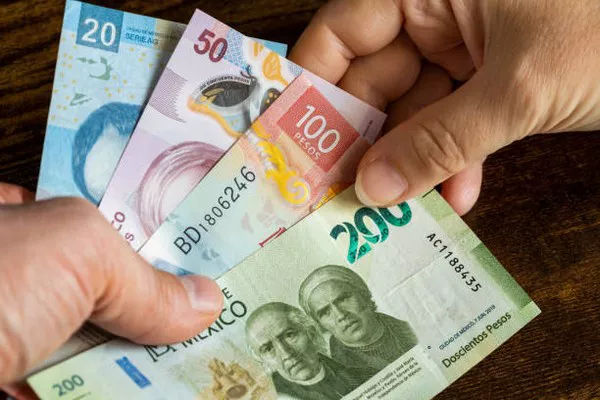Currency markets are a dynamic arena where various factors influence the value of currencies, and the Mexican Peso (MXN) is no exception. In this article, we delve into the intricacies of Mexican Peso prices, exploring the factors that impact its value in the foreign exchange market. Additionally, we examine the concept of Mexican Peso futures prices, providing insights into the role of futures contracts in managing currency risk.
Mexican Peso Prices:
The value of the Mexican Peso is determined by a multitude of factors, reflecting the economic conditions in Mexico and the broader global landscape.
Economic Indicators and Fundamentals:
Fundamental economic indicators, such as GDP growth, inflation rates, and unemployment figures, play a pivotal role in influencing the Mexican Peso’s value. A robust economy, low inflation, and high employment typically contribute to a stronger Peso. Analyzing these indicators provides a foundational understanding of the currency’s pricing dynamics.
Interest Rates and Monetary Policy:
Interest rates set by the central bank, Banco de México (Banxico), impact currency prices. Higher interest rates attract foreign capital seeking better returns, leading to an appreciation of the Peso. Monitoring Banxico’s monetary policy decisions and their implications on interest rates is essential for predicting currency movements.
Global Economic Conditions:
The global economic environment significantly influences the Mexican Peso. Factors such as global trade dynamics, geopolitical events, and market sentiment can lead to fluctuations in the Peso’s value. Understanding how global conditions interact with the Mexican economy provides a comprehensive view of currency pricing.
Factors Influencing Mexican Peso Prices:
Several factors contribute to the volatility and fluctuations observed in Mexican Peso prices.
Commodity Prices:
Mexico is a major exporter of commodities, including oil. Therefore, changes in commodity prices, particularly oil prices, can impact the Mexican Peso. A correlation between commodity prices and the Peso’s value is often observed, making it crucial to monitor commodity market trends.
Trade Balances and Current Account:
Mexico’s trade balances and current account status are key determinants of the Peso’s value. A trade surplus, where exports exceed imports, contributes to Peso strength, while a trade deficit may lead to depreciation. Analyzing trade data provides insights into the external factors influencing currency prices.
Political Stability and Policy Reforms:
Political stability and the implementation of policy reforms can influence investor confidence and impact currency prices. Market participants closely monitor political developments and policy initiatives for signals on the future direction of the Mexican Peso.
Mexican Peso Futures Prices:
In addition to spot prices, the foreign exchange market also features derivatives known as futures contracts. Mexican Peso futures provide a mechanism for market participants to hedge against currency risk and speculate on future currency movements.
Overview of Mexican Peso Futures:
Mexican Peso futures contracts are standardized agreements to buy or sell a specified amount of Pesos at a predetermined future date and price. These contracts are traded on futures exchanges, providing liquidity and a transparent platform for currency hedging and trading.
Role of Speculation in Futures Markets:
Speculators play a significant role in the Mexican Peso futures market. By taking positions based on their expectations of future currency movements, speculators contribute to price discovery and market efficiency. Analyzing the positioning of speculators provides insights into market sentiment.
Hedging Currency Risk:
Businesses engaged in international trade often use Mexican Peso futures contracts to hedge against currency risk. By locking in a future exchange rate, businesses can mitigate the impact of adverse currency movements on their finances. Understanding how hedging activities impact futures prices is crucial for risk management.
Market Participants and Mexican Peso Futures:
Various market participants engage in Mexican Peso futures markets, each with distinct motivations and strategies.
Commercial Hedgers:
Commercial entities, including multinational corporations, use Peso futures to hedge against currency risk associated with their international operations. Analyzing the hedging activities of commercial hedgers provides insights into real-world currency risk management.
Speculative Traders:
Speculative traders, including hedge funds and individual investors, participate in Mexican Peso futures markets to capitalize on anticipated currency movements. Monitoring speculative positions and trading volumes offers a glimpse into market sentiment and potential future price trends.
Interplay Between Spot and Futures Markets:
The relationship between spot prices and futures prices is crucial for understanding market dynamics and the effectiveness of futures contracts.
Efficiency of Futures Markets:
Efficient futures markets should reflect relevant information from spot markets. Analyzing whether Mexican Peso futures prices align with spot prices and expectations provides insights into market efficiency and the accuracy of price discovery.
Arbitrage Opportunities:
Traders often engage in arbitrage between spot and futures markets to capitalize on pricing discrepancies. Monitoring arbitrage activities contributes to a deeper understanding of how market participants exploit inefficiencies for profit.
The Role of Central Banks:
Central banks, including Banxico, actively participate in currency markets to manage their respective currencies.
Central Bank Interventions:
Central banks may intervene in currency markets to stabilize or influence their currencies. Examining Banxico’s interventions in both spot and futures markets provides insights into the central bank’s strategies for maintaining currency stability.
Impact on Exchange Rates:
Central bank actions can impact both spot and futures prices. Analyzing the correlation between central bank interventions and currency movements helps market participants anticipate potential changes in the Mexican Peso’s value.
See Also: 12 Surprising Facts About the Mexican Peso
Conclusion:
In conclusion, the pricing dynamics of the Mexican Peso are a complex interplay of economic fundamentals, global conditions, and market forces. Understanding the factors influencing Mexican Peso prices, as well as the role of futures markets in managing currency risk, is essential for businesses, investors, and policymakers navigating the intricate landscape of international finance. As Mexico continues to be a key player in the global economy, the scrutiny of its currency pricing mechanisms remains a critical aspect of financial analysis and decision-making.


